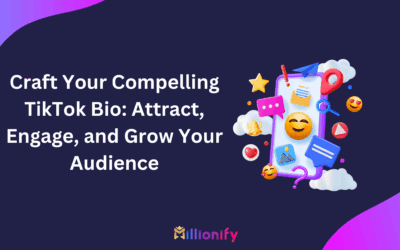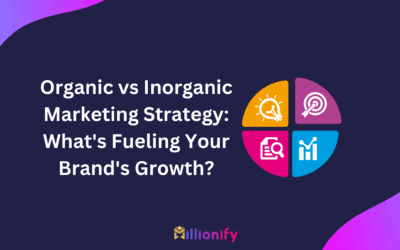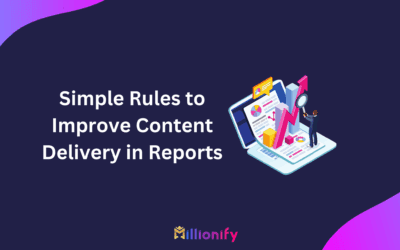In today’s digital age, businesses of all sizes recognize the power of online paid advertising. With the vast landscape of the internet, paid advertising offers a way to cut through the noise and directly reach potential customers. But where do you start? How do you ensure that your ad spend translates into tangible results? This comprehensive guide will walk you through everything you need to know about online paid advertising services, helping you make informed decisions and maximize your return on investment (ROI).
What Are Online Paid Advertising Services?
Online paid advertising services encompass a range of digital marketing strategies where businesses pay to promote their products or services on various online platforms. Unlike organic marketing methods, paid advertising allows businesses to quickly generate traffic, leads, and sales by placing ads in front of a targeted audience.
Types of Online Paid Advertising Services
There are several types of online paid advertising, each with its own unique benefits and applications. Let’s explore the most common forms:
- Pay-Per-Click (PPC) Advertising
- Search Engine Ads: These appear on search engine results pages (SERPs). Google Ads is the most popular platform, but Bing Ads also offers value.
- Display Ads: Visual ads that appear on websites within the Google Display Network or other ad networks.
- Social Media Advertising
- Platforms like Facebook, Instagram, LinkedIn, and Twitter allow for highly targeted ads based on user demographics, interests, and behaviors.
- Native Advertising
- These ads match the look and feel of the platform they appear on, providing a less intrusive user experience. Examples include promoted articles on news websites.
- Video Advertising
- Platforms like YouTube offer opportunities to place video ads before, during, or after content. Social media platforms also support video ads.
- Affiliate Marketing
- Partnering with influencers or websites to promote products or services on a commission basis.
- Remarketing/Retargeting
- Targeting users who have previously interacted with your website or ads to encourage them to convert.
Benefits of Online Paid Advertising Services
Why should you invest in online paid advertising? Here are some compelling reasons:
1. Immediate Results
Unlike SEO, which can take months to show results, paid ads can drive traffic and conversions almost immediately after your campaigns go live.
2. Targeted Reach
Paid advertising allows you to target specific demographics, locations, and even user behaviors, ensuring your ads reach the right audience.
3. Measurable ROI
With tools like Google Analytics and Facebook Insights, you can track the performance of your campaigns in real-time and adjust them to improve ROI.
4. Enhanced Brand Visibility
Paid ads can significantly boost your brand’s visibility, keeping your business top of mind for potential customers.
5. Cost-Effective
When done correctly, online paid advertising can be highly cost-effective, delivering high returns for a relatively low investment.
Setting Up Your Online Paid Advertising Campaign
Creating an effective paid advertising campaign involves several steps. Here’s a step-by-step guide to get you started:
Step 1: Define Your Goals
Before launching a campaign, it’s crucial to define what you want to achieve. Are you looking to increase website traffic, generate leads, or boost sales? Your goals will shape your entire strategy.
Step 2: Identify Your Target Audience
Understanding your audience is key to a successful campaign. Consider factors such as age, gender, location, interests, and online behavior. Tools like Facebook Audience Insights and Google Analytics can provide valuable data.
Step 3: Choose the Right Platforms
Select the platforms that best align with your audience and goals. For example, if you’re targeting professionals, LinkedIn may be more effective than Instagram.
Step 4: Set Your Budget
Determine how much you’re willing to spend. Most platforms offer flexible budgeting options, allowing you to set daily or lifetime budgets.
Step 5: Create Compelling Ads
Your ads should be engaging and relevant. Use high-quality visuals, clear and concise copy, and a strong call-to-action (CTA). A/B testing different ad variations can help identify what works best.
Step 6: Monitor and Optimize
Once your campaign is live, continuously monitor its performance. Use analytics to track metrics such as click-through rates (CTR), conversion rates, and cost-per-click (CPC). Optimize your campaigns by adjusting targeting, budget, and ad creatives based on performance data.
Tips for Successful Online Paid Advertising
To make the most of your ad spend, consider these best practices:
1. Use High-Quality Visuals
Eye-catching visuals can significantly increase engagement rates. Invest in professional images or videos that resonate with your audience.
2. Leverage A/B Testing
Test different versions of your ads to see which performs better. This can involve changing the headline, image, CTA, or target audience.
3. Optimize Landing Pages
Ensure that the landing pages your ads direct to are optimized for conversions. This means having a clear headline, compelling copy, and a straightforward CTA.
4. Utilize Retargeting
Retargeting helps you reach users who have already shown interest in your brand. This can lead to higher conversion rates as these users are more likely to convert.
5. Keep Up with Trends
The digital marketing landscape is constantly evolving. Stay updated with the latest trends and adjust your strategies accordingly.
Common Mistakes to Avoid
Even experienced marketers can make mistakes. Here are some common pitfalls to watch out for:
1. Ignoring Mobile Users
A significant portion of internet traffic comes from mobile devices. Ensure your ads and landing pages are mobile-friendly.
2. Poor Targeting
If your ads aren’t reaching the right audience, your campaign will suffer. Refine your targeting to ensure you’re reaching potential customers.
3. Neglecting Analytics
Failing to monitor and analyze your campaign performance can lead to wasted ad spend. Regularly check your analytics and make data-driven decisions.
4. Overlooking Ad Fatigue
Running the same ads for too long can lead to ad fatigue, where users become blind to your ads. Refresh your creatives regularly to keep them effective.
Case Study: Successful Online Paid Advertising Campaigns
Example 1: Dollar Shave Club
Dollar Shave Club is a prime example of a brand that used online paid advertising to disrupt a traditional industry. Their viral video ad campaign, promoted across social media and search engines, led to exponential growth and a multi-billion dollar acquisition by Unilever.
Example 2: Airbnb
Airbnb leveraged Google Ads and Facebook Ads to target travelers searching for accommodation. By using dynamic ads that showcased available listings based on user search history, Airbnb significantly increased their booking rates.
Future Trends in Online Paid Advertising
As technology advances, so does the world of online paid advertising. Here are some trends to watch:
1. Artificial Intelligence (AI) and Machine Learning
AI and machine learning are transforming paid advertising by optimizing ad placements, predicting user behavior, and personalizing ad content.
2. Voice Search Advertising
With the rise of voice-activated devices like Amazon Echo and Google Home, optimizing ads for voice search is becoming increasingly important.
3. Interactive Ads
Interactive ads, such as polls or playable ads, engage users in a more dynamic way, leading to higher engagement and conversion rates.
4. Augmented Reality (AR) Ads
AR ads allow users to interact with products in a virtual environment, providing a unique and immersive experience.
Conclusion
Online paid advertising services offer unparalleled opportunities to reach and engage with your target audience. By understanding the different types of ads, setting clear goals, and continuously optimizing your campaigns, you can achieve significant returns on your investment. Remember, the digital landscape is always evolving, so stay informed and be ready to adapt your strategies to stay ahead of the competition.
FAQs
1. What is the difference between PPC and CPM?
- PPC (Pay-Per-Click): You pay each time someone clicks on your ad.
- CPM (Cost-Per-Thousand Impressions): You pay for every 1,000 impressions your ad receives, regardless of clicks.
2. How can I measure the success of my online paid advertising campaign?
- Track metrics such as click-through rates (CTR), conversion rates, return on ad spend (ROAS), and overall ROI using analytics tools provided by the ad platforms.
3. Is social media advertising effective for B2B companies?
- Yes, platforms like LinkedIn are particularly effective for B2B advertising, allowing you to target professionals based on industry, job title, and other relevant criteria.
4. How much should I budget for online paid advertising?
- Your budget depends on your business size, industry, and advertising goals. Start with a small budget, test your campaigns, and scale up based on performance.
5. Can online paid advertising help with brand awareness?
- Absolutely. Paid ads increase your brand’s visibility and can help establish your presence in the market, even if immediate conversions are not the primary goal.
By leveraging the power of online paid advertising services, you can effectively grow your business, reach new customers, and achieve your marketing objectives. Whether you’re a seasoned marketer or just getting started, this guide provides the foundation you need to succeed in the digital advertising space.


